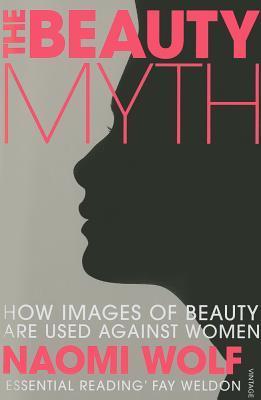 This book has been on my book radar since 2012. I started reading this in December 2015 but due to a hectic academic schedule, could pick it up again only a few days ago.
This book has been on my book radar since 2012. I started reading this in December 2015 but due to a hectic academic schedule, could pick it up again only a few days ago.
So what makes BEAUTY such a constant hot topic among women and men alike? Men admire, adore, fall for beautiful women and women keep trying to control, preserve and look consistent with their beautiful faces and bodies. What does the term exactly mean? I had as a kid understood being beautiful as being fair, with a radiant smile and long black hair. This was the official definition that prevailed amongst us girls in high school. I remember the excited conversations of my girl pals about cosmetics and jewellery. Since my parents never showed any interest in such things even for themselves, I was also not inclined towards it any time in my life. It was only after joining an architecture college did I come face-to-face with beauty and its implications. If you have a beautiful face and a pleasant white teeth shiny smile, you got assigned with important projects. It is during one of those final years that I started reading a lot of Gender Studies material. It got started with reading Erica Jong, Gloria Steinem and some feminist anthologies.
The reason why I have built up this introduction is because I want to emphasize on my thoughts about Naomi Wolf’s brilliant book that questions about beauty with respect to religion, culture, sex, violence and work. How is a writer from a western country tackling notions of beauty and how are they relevant to women from the East? For one, The beauty myth is a global phenomena that is surprisingly quite established in women’s psyche since centuries. To put it in a better way, its a myth that found its way throughout different ages, civilizations as a means of sexual attraction for reproduction. In a far away place, men liked their women to paint their faces or sculpt their bodies so that it could titillate them. Women’s bodies were enjoyed as objects because of the supremacy of male hierarchy. The connotations of weak, slender, fragile were associated with women since they were engaged in child rearing and motherhood. The male domination came from the fact that the one who provided for food was the one who had more natural superiority and this drew a fine, invisible, unspoken line between the two genders.
This book by Wolf looks at women in work culture where their beauty is often propagated as an essential means of their performance. Beautiful faces get more respect than plain, unpainted faces. Attractive women are seen as spokeswomen, receptionists, airline crew, secretaries, recreation staff. Their pleasant faces and radiant smiles are supposed to drive your exhaustion away. The prettier you are, more social circles will willingly take you in. What happens to women with not-so-pretty faces? They live sometimes visible, sometimes invisible lives. Because this book was written in 1990, we would think times have changed. After 25 odd years, women and beauty won’t be given much thought to. We are wrong. Women still get judged on parameters of beauty. There is the perfect hair, perfect height, perfect body, perfect waistlines, perfect calves. What part of women’s bodies have not gone through a sceptic’s eye? Every inch of women’s bodies is supposed to be perfect, down to a number published by some cynic that got global recognition and due. All civilizations lapped it. Women everywhere long for images that are bombarded through media, advertisements, cinema, art and all sorts of propaganda machinery available to the big bosses that run the beauty business.
The book takes on even more powerful and raw challenges on women and culture, their images and stand in religion everywhere, and ultimately on violence. This is one book that ought to bring out all the subsided anger within women and men who think pro-actively for women. When men talk ignorantly about the need for feminism, give them this book to read and think, if they can, on the superficial world they have created by and large for themselves. Not any more. To women, I say, READ this book. A 25 year time gap has not changed anything about the perceived status and images of women, worldwide. Feminist or not-feminist, we need such texts to keep hammering our churning lives with the right thoughts.
